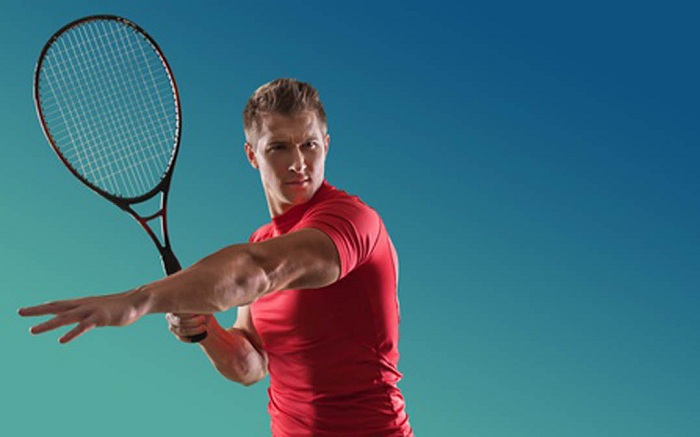„Tennis elbow” – reasons of pain and treatment
Pain located in the lateral area of cubital joint most often suggests the existence of medical condition commonly called "tennis elbow". It is very complicated concept that has wide range of causes and foundations. Pain in the lateral area of cubital joint is the major symptom , and its location is as follows: on the plane of humero- radial joint , in the area of lateral epicondyle of humeral bone, where radialisposteriornerve goes under supinator muscle, on the plane of the head of radius. Patient sometimes can't locate the pain and describes it as "diffuse", however the situation like this is rare.
Performing manual labor or the training requiring pronation and supination movements of the forearm and straitening movements of the wrist joint clearly intensify the pain. We can observe, among other clinical symptoms: weakening of the grip, pain due to transferring during straightening of the fingers and wrist, and fatigability of the hand muscles.
The most common causes of the pain in the lateral area of cubital joint are: enthesopathy of the aponeurosis of extensors carpi, inflamation of the bursa in the area of humero-radial joint, ligamenta glenohumeralia pain syndrome, postraumatic inflammation of the synovial membrane of cubital joint, outgrowth of the synovial recess between the head of radius and the head of cubital bone and calcium accommodation in aponeurosis of fingers and wrist extensors.
In case of enthesopathy of the aponeurosis of extensors carpi, a patient reports pain and tenderness of the periostium of lateral epicondylum of cubital bone on the front and in the lateral area of aponeurosis of extensors of the wrist and fingers, a little on the front side. During dorsal flexing of the wrist and fingers a patient experiences the intensification of the symptoms.
A bursa in the area of humero-radial joint is located between aponeurosis of extensordigitorum muscle and humero-radial joint. Its inflammation causes the symptoms similar to enthesopathy of the aponeurosis of extensors carpi.
The aponeurosis of extensordigitorum muscle that constantly flexes because of regular contractions may causes pressure on the ligamentum anulare and elicids pain. The disease is characterized by pain in the head of the radial bone area which intensifies during pronation and supination of forearm and flexing of dorsal wrist and fingers.
Posttraumatic inflammation of the synovial membrane of cubital joint that is often accompanied by hemorrhage into articular cavity is characterized by large swelling and pain in the lateral area of cubital joint. A common symptom is also increased temperature of the skin and in some cases redness.
A structure that sometimes is overgrown and swelled is lunular fold of the synovial membrane located between the head of radius and the head of humerus. In this case a patient reports
tenderness in the lateral area of humero-radial joint accompanied by flexing contracture of cubital joint.
Very popular method of treating pain in the lataral area of cubital joint are the steroidal injections in the area of the lateral epicondylus of humerus. This therapeutic method may lead to precipitation of calcium around aponeurosis of the wrist and fingers extensors. In addition a local pain may be accompanied by soreness while straightening a wrist.
There is a lot of various treatments and therapies of pain in the lateral area of cubital joint. Among others:
- correction of the ergonomics of work ( e.g. different hands' alignment on the keyboard)
- rehabilitation (physiotherapy , shock wave, needle therapy, loosening soft tissues, crosswide massage)
- Kinesio Taping
- using tourniquet
Our job in CoreandMore clinic is treating various medical conditions and protecting from pain recurrence in the affected area.

